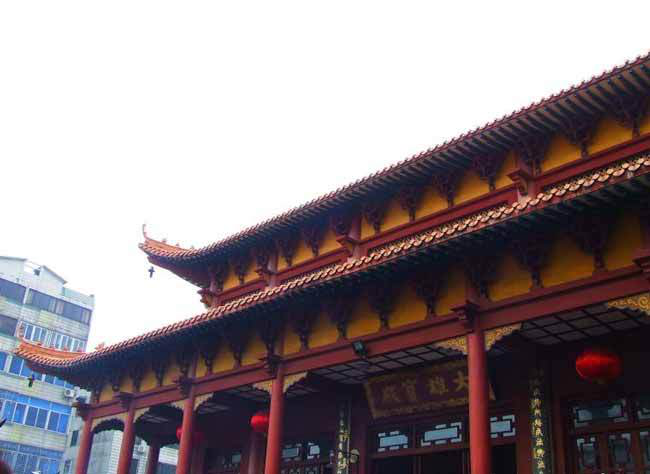
Guangxi-Nengren Temple
It was built in Liang Tianjian two years (503), more than 1,400 years ago. In the Tang Dynasty, Buddhism flourished, and the house of Lu Zhi, who was a bachelor of the Han dynasty in Dezong, was built on a foundation, named Fuye Academy, and later renamed Baoguo Academy. In the Song Dynasty, Dazhongxiang Fu was renamed Chengtianyuan in the first year (1008), and Zhengrenyuan was renamed in the 7th year of Zhenghe (1117). It was destroyed by Bingshuang in the sixteenth year of Emperor Yuanshun (1356), and renamed Nengrenjiao Temple in the twenty-four years of Ming Hongwu (1391). It was rebuilt in the second year of orthodox (1437), and it was called Nengren Temple in the second year of Qianlong in Qing Dynasty (1737).

It was built in Liang Tianjian two years (503), more than 1,400 years ago. In the Tang Dynasty, Buddhism flourished, and the house of Lu Zhi, who was a bachelor of the Han dynasty in Dezong, was built on a foundation, named Fuye Academy, and later renamed Baoguo Academy. In the Song Dynasty, Dazhongxiang Fu was renamed Chengtianyuan in the first year (1008), and Zhengrenyuan was renamed in the 7th year of Zhenghe (1117). It was destroyed by Bingshuang in the sixteenth year of Emperor Yuanshun (1356), and renamed Nengrenjiao Temple in the twenty-four years of Ming Hongwu (1391). It was rebuilt in the second year of orthodox (1437), and it was called Nengren Temple in the second year of Qianlong in Qing Dynasty (1737).
Nengren Temple is magnificent and magnificent. It is surrounded by water and covers an area of more than 70 acres. The temple block faces south to the north, and is slightly rectangular. The main buildings are located on a north-south axis and its east and west sides. The mountain gate is directly opposite the Tianxian Bridge. To the north of the mountain gate is the Jinze Hall, the Noble Hall and the Huayan Pavilion. There are two towering ginkgo plants and a pair of brick towers in front of the vajra hall. To the east of the main hall is to commemorate the construction of Xuan Gong Temple in Lu Zhi, to the west is the Luban Hall and Kung Tak Lam. In front of the main hall are the bell tower and the drum tower. The monasteries around the monastery are lined up, and the Zen room is listed. There are twelve meditation rooms and more than 100 monks. They are well-known large monasteries.
Nengren Temple has gone through thousands of years of experience and has experienced many ups and downs. There are also many moving stories. At the end of the Qing Dynasty, a ruthless fire, unfortunately, Nengren Temple was destroyed. At that time, the Chinese doctor Shen Jiliang's wife Qiu was wearing a cascade, carrying a statue of Wei Tuo, holding Muyu along the street and kneeling to the capital of Nandang Town, Waibu. After 49 days, he finally moved the rich room to get funding to rebuild the Great Hall of Heroes. The Japanese invaded in 1938, and Nengren Temple was destroyed by fire again. The only surviving sites are the Huayan Pavilion and the Silkworm Emperor Hall, which have been rebuilt by relevant units in recent years. Soon we will see the former majesty of Nengren Temple.





